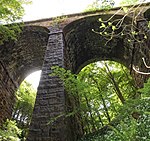The Beeching cuts (also Beeching Axe) refer to the reduction of route network and restructuring of the railways in Great Britain outlined in two reports, The Reshaping of British Railways (1963) and The Development of the Major Railway Trunk Routes (1965), written by Richard Beeching and published by the British Railways Board. The first report identified 2,363 stations and 5,000 miles (8,000 km) of railway line for closure, representing 55% of all stations and 30% of route miles, with an objective of stemming the large financial losses being incurred during a period of increasing competition from road transport; the second identified a small number of major routes within the remaining network for significant investment. The 1963 report also recommended some less well publicised changes, including a switch to containerisation for rail freight. Protests resulted in the saving of some stations and lines, but the majority were closed as planned and Beeching's name is to this day associated with the mass closure of railways and the loss of many local services in the period that followed. A number of these routes have since reopened, been incorporated into the National Cycle Network or used within roads schemes; others were lost to construction or simply reverted to farm land.
Recently selected: Bay Street (NJT station) - Tanum Tunnel - District Railway
